Luna Park, Scranton
Luna Park, an amusement park in Scranton, Pennsylvania, from 1906 to 1916, initially designed, built, and operated by two companies affiliated with amusement park pioneer Frederick Ingersoll, occupied a mostly western-facing 20-acre tract of land on Moosic Mountain along the eastern side of Roaring Brook gorge, opposite present-day Nay Aug Park.[1] No historical marker commemorates the site of the park.
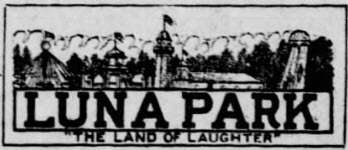
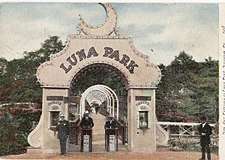
Inception
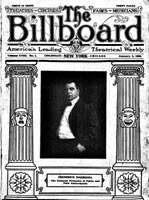

Despite similar names, the park is not affiliated with Thompson & Dundy's park on Coney Island, New York, USA, or the "Hippodrome". Thompson & Dundy, however, first promoted ideas of franchising in August 1904[2] but did not file for trademark or copyright protection.[3] Although many types of parks, exhibitions, and entertainment attractions existed at this time, Ingersoll capitalized on standardization,[4] following a formula that characterizes all his "Luna Parks": the first two, in Pittsburgh and Cleveland opened in 1905, a park in Washington, DC and Indianapolis opened in the same year as Scranton, one in Mexico City the following year, then others, forming the first amusement park chain. Advertising in trade publications, such as The Billboard, Ingersoll sought regional investors with catch-phrases as "We use the best materials, perfect plans, expert builders, and reasonable price. We build for you or build and operate."[5] Construction was standardized, and vaudevillian acts, circus, and other exhibitions were able to be rotated between parks as low-cost entertainment. Parks were designed and built using expertise of his Ingersoll Construction Company employees, then operated by a local company which could acquire services, such as entertainment and technical help, from him.
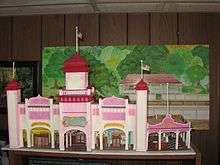
As such, Ingersoll Construction Company with funding of $300,000, designed and constructed the park beginning November 14, 1905.[6] The Scranton Luna Park Company began operating the park on May 28, 1906.[7] Newspaper articles from the Scranton Republican, The Scranton Truth, and other local newspapers suggest a decision to proceed was based on increasing levels of public interest beginning as early as July 17, 1900.[8]
Between 1903 and 1905, besides related interest pieces, such as "The Execution of Topsy the Elephant",[9] and "Moon Queen to Become Bride",[10] among others, local newspapers published an ever-increasing number of advertisements regarding chartered excursions by the Central Railroad of New Jersey[11] and the Lehigh Valley Railroad[12] to Luna Park, Coney Island. This did not escape notice of local financiers, publicly known initially as Thomas F. Penman, John H. Brooks, C.K. Bedford, S.S. Spruks, Charles Gunster, Herman Osthaus, and Hayden Evans, suggesting the public's increasing interest was income that could otherwise be earned locally. Similarly, the investors noticed remarkably heavy patronage of "Carbondale's Luna Park",[13] a temporary fund raising effort facilitated by multiple volunteer fire companies recreating a "miniature-Luna Park" in the borough for a short time. In this same period, perhaps submitted by Ingersoll himself, the Scranton Republican ran a lengthy article, "The Marvels of Luna Park - How a 39-acre Mud Hole Evolved into a Multi-million Dollar Entertainment Enterprise",[14] showing a time and cost breakdown per patron per amusement. Reasonable estimates of anticipated income and profitability, and knowledge of available support services, provided the investors with the business justification to approve Ingersoll's announcement of "Luna Park, Scranton" in the fall of 1905[6] and proceed with construction.
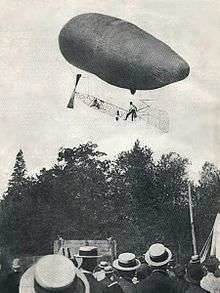
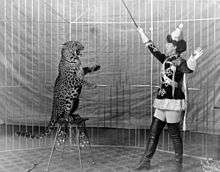
Design and construction
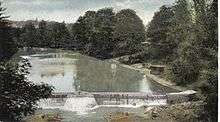
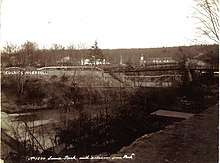
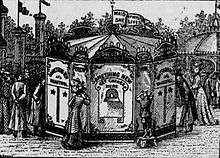
Ingersoll's park planning relied on specific "anchor" amusements and taking advantage of scenic location. Ingersoll, himself, described this park as being "of three parts".[15] The "first section" dammed Roaring Brook to form a small lake intended for boating and aquatic sports. Crossing a high footbridge over the gorge, one entered an oval-shape amusement "second section" centered around the "T. Folks Shoot-the-Chutes"[16] pool known as "The Lagoon".[16] Buildings and amusements would change over the life of the park, but initially this was composed of the "Scenic Railway",[17] "H.G. Traver's Aerial Circle Swing", "Scenic River/Old Mill", "Blarney Castle", "Shades and Shadows", "E. Conley's Shooting Gallery", a "Steele MacKaye Scenitorium",[18] "Temple of Mystery",[18] "Edisonia",[18] "Trip to Rockaway",[16] "Dance Pavilion",[16] "J.D. William's Restaurant", a 3-tier "Dentzel Menagerie Carousel",[18] "Williams Ice Cream/Soda Fountain", "Band Stand", and "Circus Platform" (later called "The Hippodrome"). The third section was the picnic grounds with a large "Picnic Pavilion". Other significant attractions were added to the park over time, from the groundbreaking "Hale's Tours of the World" to the more simplistic "Mahoney's Pony Rides". Live vaudeville acts, exhibitions, circus, and orchestra performances were scheduled as free entertainment complementing patrons' visits. Two of the most successful were appearances of the Knabenshue Toledo No. 2 airship,[19] flown by Aviator Lincoln Beachey, and the world-famous leopard act by Dolores Vallecita.[20]
Integral to its design, Scranton Luna Park was to be serviced by rail facilities as a "trolley park". The park enjoyed record attendance[21] in its first years, facilitated primarily by an interurban, electrified, Lackawanna & Wyoming Valley Railroad or "Laurel Line",[22] and Scranton Railway Company trolleys.[23] Not until several years later were two automobile parking lots added.[24]
Financial concerns
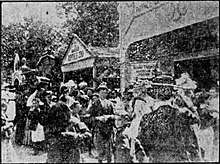
The biggest disadvantage to park planning was that two large lots upon which they were sited were leased with ballooning rental payments over time. This proved consequential as effects of the Panic of 1907 wracked the U.S. economy. Ingersoll publicly spoke of expanding the park after the first year of operation but was forced to regroup funds.[25] He sold his stock holdings in the park to the board of the Scranton Luna Park Company[26] and resigned his position as the park's vice-president.[27] As the recession took hold of the economy, outings, picnics, and excursions no longer were reserved by church groups, social organizations, and businesses as they had been. Undaunted and following Ingersoll's idea, the Board of Directors moved forward with major expansion, adding a number of buildings, demolishing and remodeling others, and adding major lighting effects to stimulate public interest.[28] Consequently, these actions initiated debt as ticket sales did not cover operating expenses, lease payments, and added cost of expansion.[27]
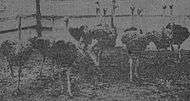
Rather than default on lease payments, the Board of Directors decided to accept new members, local capitalists that could not only pay off construction debt but acquire land outright.[31] The principal investor was Adolph Blau who maintained a series of local businesses including a private bank, "The Blau Bank House", to which representatives of the park critically signed promissory notes consisting of a modest pay-back schedule[32] and with a confession of judgement clause. Blau received a majority of stock for the transaction and became president of the park company for several years.[33] Surprisingly, despite the failing economy and debt scare, the Board of Directors invested in additional attractions prior to opening for the 1909 season – an arcade, "Billiken's Temple" fun house, alligator zoo, glass blowing exhibit, miniature railroad, and upgrades to others not previously contemplated. During this season, competition from other area parks, largely copying the "Luna recipe", began to have an effect on drawing park patrons away.
Continuous, reliable revenue remained a problem. Attendance was highly variable and unable to be forecast with certainty. Throughout the next four years, management observed large crowds on weekends, holidays, and special occasions such as company picnics, and special outings but sparse during an average day. They identified several serious problems for which a remedy was difficult, especially without Ingersoll's professional advice and expertise.
Attempts at mitigating strategies
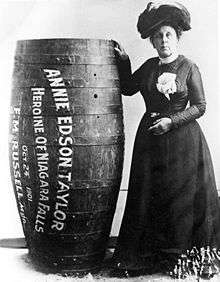
One issue was obtaining quality vaudeville acts, despite membership in the National Amusement Park Association.[34][35] A counter-strategy, erecting an outdoor 35 × 40 foot "moving picture" screen and displaying first-run films, many of which were untitled "dailies" from movie companies out of New York[36] was not successful in bad weather. Another idea tested, drawing inspiration from Barnum, was to establish a full-scale circus staged in a vacant field within park boundaries, curtailed as too expensive.[37] Park management tested other ideas; one resulted in an air crash of a Curtis biplane by Aviator Lester Weeks in the park.[38]
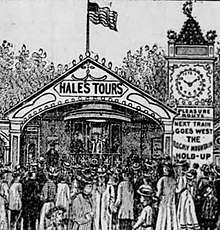
A scheme intending to bottle mineral water under the non-trademarked name "Yam-Yam" (Sea-to-Sea) from the park's "Tunnel Spring"[39] located between the Scenic Railway station and the Photography Studio for retail sale, failed. Despite construction of the "Spring House", personal endorsements extolling the water's virtues as a Native American elixir, and renaming the spring to "The Nayawauga Mineral Spring",[40] it unexpectedly encountered backlash from neighbors' vehement complaints of paying for water formerly accessible for free, forcing management to cancel plans and unrestrict access to the taps.
Regardless, according to published reports, there was a notable drop-off of published, scheduled, group outings, picnics and excursions at end of the 1911 season, and park management was relieved when large labor unions decided to charter their Labor Day festivities, providing enough revenue to survive to close the season.
.jpg)
A cinematic venture was entered in April 1913 by park manager J.E. Monroe and the Cities and Towns Film Company to use the park as a movie backdrop.[41] Starring Maclyn Arbuckle in a variation of The Round Up, it portrays a scene using the park in which a threatening brush fire is extinguished by the fire department. Publicized as a cold weather exposure test, it resulted in a flawed print, but played in Scranton's Victoria Theater for one week and minimized royalties owed to the park under contract.
Competing parks and theaters were maintaining parity or lowering prices to Luna's rates of admission. Luna's tickets were set at a dime for adults and a nickel for children for gate admission, plus ten cents admission to each attraction. To compete with these venues, Luna management ran promotional advertisements with local vendors, such as Kolb's Pan-Daddy bread[42] to distribute free gate tickets; tried bundling tickets, that is, offering free admission and waiving fees for certain venues; advertised out of state; and copied ideas found in other parks, such as the "Baby Incubator",[43] all with modest success. Through these marketing efforts, they discovered dancing as a source of revenue. With the sound of orchestrated music played by the park's band, they could charge ten cents per person per dance in the Dance pavilion, and by the end of the evening with a repertoire of 30 songs, and over 300 minimum visitors, could earn significant daily revenue. The park enhanced this strategy by hiring dance instructors encouraging people to "get out on the floor" and "try dancing lessons" before regular dancing started and charging for private lessons. Dancing was very popular in this era and quickly became the principal money-maker at the park until its end.
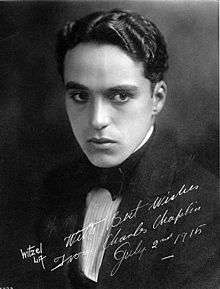
Accidents in the amusement industry induced changes in 1914 to enhance safety. Reportedly roller coasters in other parks had taken a yearly toll in "maimed and crippled limbs". Direction by the Board of Directors to enhance safety "to make doubly sure it is nigh impossible for anything to go wrong at the park" to park management came "with an immense sum spent".[44]
Expenses to enhance safety forced management to double-down recruitment of private excursions, picnics, and outings and were met with success. Based on published reports over this season, the number of patrons noticeably increased. Dancing engagements increased as a result of weekly dance contests with dance instructors coaching students in the latest dance steps prior to contests. But management erred deciding to follow the example of major parks and open on Sunday. An outraged Reverend Anderson successfully led a boycott of the park forcing Sunday closure.[45] Many religious groups canceled their excursions and revenue dropped significantly.
An unusual "endorsement" strategy infused great optimism as the park recorded significant numbers of patrons early in the 1915 season. Being promoted as a supposed "trip" to see an alleged friend and park manager, actor Charlie Chaplin visited the park on June 7, 1915[46] described by local newspapers as a "small riot" of people paying to glimpse the popular actor.
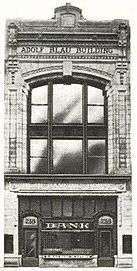
Financial collapse of the park began on June 11, 1915 with the failure of the Blau Bank House.[47] Blau's bank allegedly held significant cash deposits for the park which were then lost,[48] controlled 1,393 shares of park stock that would sell below value during bank bankruptcy proceedings,[49] and more significantly, held a promissory note using Luna Park as collateral for payment on land purchased years earlier. In an effort to regain depositor assets,[50] bankruptcy attorneys reviewed outstanding debts owed to the bank and discovered note 334 assigned to Luna Park.[51] Nearing the end of the season with lost funding was a difficult situation for management in meeting obligations required on the note. So unusually, they remained open as late as possible, until September 25, to generate sufficient revenue but with consequences. Several large groups booked end-of-season outings and many dance contests were held to attract patrons, but key managers resigned and an accident with injuries occurred on an overcrowded "Scenic Railway". In the final year, all expenses were cut drastically including insurance with heavy emphasis on filling the Dance pavilion as much as possible with patrons.
Disastrous end and aftermath
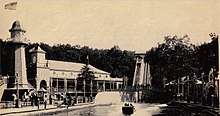
Disaster struck irrecoverably when one third of the park was destroyed by fire in the early morning of August 23, 1916.[52] An uninvestigated fire of unknown origin[53] destroyed facilities critical to the production of revenue including the Dance pavilion, Scenic Railway station, Shoot-the-Chutes amusement and railroad tracks of the Laurel Line Railroad. The eyewitness account of Scranton city patrolman John J. Horn, who discovered the fire, stated the fire's origin appeared to be the eastern side of the Dance Pavilion.[54] Although there was speculation of an electrical origin, or one based on dumped ashes from a railroad steam locomotive,[55] this was the approximate location[56] used for incineration of the park's waste paper, i.e. confetti, old sheet music, etc., and the previous location of at least one serious fire.[57] The two-story structure's ground floor also contained the park's sign and paint shop in which flammable materials were stored. The fire was "well involved" when discovered and windy conditions were prevalent. The fire jumped from one structure to the next, burned overnight until dawn, and could be seen for miles. Estimated damage was $15,000.[52]
Even as the park continued to burn, the Board of Directors convened an emergency session nearby. As a very large outing was scheduled to occupy the park in days, and looming debt action was required, a decision was made to recreate the dance floor as quickly as possible.[58] As the embers began to cool that morning, 150 workers were seen beginning to clear the area of debris and pour a new concrete foundation for the dance floor.[59]
By the end of the week, a roofless dance floor was completed but emergency funds provided by individual board members were exhausted forcing decisions not to rebuild the Scenic Railway roller coaster station, the Shoot-the-Chutes ride, or substantially repair other damage.[58] On the day of the large outing, August 26, 1916, very heavy rains fell. Attendance was limited as no one wished to pay to dance on an open platform under such conditions.[60] Revenue was well below expectations.
Payments were due and an attempt was made to survive, but the Board of Directors was unable to raise sufficient funds by the deadline. On January 5, 1917, exercising a confession of judgement clause of the Blau Bank House promissory note, the park was sold at public auction to a bankruptcy attorney, Ralph W. Rymer, representing a then-anonymous individual interested in the land.[61] In early May 1917, local newspapers announced all amusement buildings would be razed.[62][63] After demolition, that individual, Peter Stipp, Sr.,[64] eventually sold the land to the city of Scranton[65] which then quieted liens due on the promissory note through the confessed judgment clause.[66]
On February 2, 1929, an attempt was made by A.H. Strohl to resurrect an amusement park on the site,[67] but was rejected by the Scranton city council on the basis of weak financial planning and concerns of neighbors over noise.[68][69]
Today
Few park remnants are identifiable today: a dam, circus platform, alligator pit, lagoon edge, an access tunnel from Laurel Line roadbed, and scattered bits of concrete. Much of the overgrown grounds were covered by 1960's construction of Interstate 81, which intersects the former area of Ingersoll's sections two and three, including the area of the Dance pavilion, and "Shoot-the-Chutes" lagoon. More land was covered or excavated by a widening of the Central Scranton Expressway in 1998. Urban development encroached the northern side (Myrtle Street) of the grounds of the former park. The mineral spring has long vanished.
Postcards and other memorabilia can occasionally be found on online auction sites and in antiques sources in northeastern Pennsylvania. The original Luna Park souvenir shop sold glass and ceramic items etched or painted with park scenes. Beginning in 1906 with Ebert & Company's black-and-white series, several postcard companies published park photo postcards. The Scranton Electric City Trolley Museum has a small public exhibit of such memorabilia.
No findings of formal, academically based, archaeological investigations of the area have been published. Several bloggers have recorded still and video imagery of walks through the area, available to access through online searches and social media.[70]
Appendicies
Tenure of Park Managers
| Season(s) | Manager | Term of Service |
|---|---|---|
| 1 | Len B. Sloss | 5/28/1906 - 6/16/1906 |
| 1 | A. J. Duffy | 6/16/1906 - 7/21/1906 |
| 1 - 2 | James Atherton | 7/21/1906 - 7/6/1907 |
| 2 - 6 | Len B. Sloss | 7/6/1907 - 3/5/1911 |
| 6 - 8 | Thomas M. Gibbons | 3/5/1911 - 8/8/1913 |
| 8 - 10 | M. J. Lynott | 8/11/1913 - 2/27/1915 |
| 10 | J. E. Babson | 3/12/1915 - 11/18/1915 |
| 11 | J. Victor Graybill | 5/23/1916 - 11/26/1916 |
Murder, Mystery and Mayhem at Luna Park, Scranton
Representative list compiled from newspaper reports of ten examples by season of unusual events that occurred in the park. (Dates are listed in the US month/day format.)
1906: Season 1
- 05/27 Mr. William Koehler, park construction worker, found dead due to a railroad accident near park entrance.
- 05/31 Mrs. Ida Hentschall becomes first case in park hospital as a result of fainting when park illuminated.
- 06/07 Mr. Timothy Loughman, park carpenter, suffers a serious eye injury in the park.
- 06/13 Park Manager Sloss cancels the contract of the Kitabanza Imperial Japanese Troupe on the basis of mediocre performances.
- 06/20 Tent housing airship catches fire due to an electrical problem. Park is without power during the event.
- 06/29 Hail stones two-inches wide pelt the park.
- 07/20 12-year old Miss Rose Clifford fractures her arm in the park.
- 08/15 Homeward-bound patrons rush an evening Laurel Line train causing many minor injuries.
- 09/04 The "Pollay Mammoth Loop" act is cancelled after a performer is badly injured during an off-site practice session.
- 09/29 A Laurel Line car burns near the park's station one day after the park closes for the season.
1907: Season 2
- 05/26 Park Manager Atherton cancels the contract of the Kashi Japanese Acrobatic Troupe.
- 06/04 A layer of ice covers the Dance Pavilion floor.
- 06/20 Drill performances in the park's Hippodrome are cancelled due to bad weather.
- 06/24 Park Manager Atherton cancels the contract of the "Silvern and Emerie" act.
- 07/02 A 16-year old card-shark is arrested in the park. He is fined $10 for illegal gaming.
- 07/03 Mr. Silas Ward is arrested in the park for "appealing for funds".
- 07/18 Park Manager Sloss cancels the contract of the "Wheelock's Indian Band".
- 07/30 Pickpockets strike the area around the park including the park's Laurel Line station.
- 08/13 French acrobat Mlle. Laubet is injured during her "Loop of Death" performance.
- 08/29 Park Manager Sloss reports his gold watch and fob are stolen from the park office.
1908: Season 3
- 06/05 An abandoned baby is found in the park and is later raffled off on June 12.
- 06/11 During the Anthracite Kennel Club Dog Show in the park, a prized King Charles spaniel is "lost".
- 07/07 Addition of a "dancing girl" significantly enhances the patronage of the "Hindu Theater".
- 07/08 A Komodo dragon escapes from the reptile exhibit and is not found until July 29.
- 08/17 A sheath-gown contest is interrupted by a police raid but is later rescheduled.
- 08/22 A flaming red dragon display is illuminated by Col. R.A. Phillips on behalf of President Theodore Roosevelt.
- 09/07 Power shortages affect the availability of streetcars to the park.
- 09/10 After in-park arrests the day before, two men associated with the "Black Hand" gang are found dead outside of the park.
- 09/20 A watchman discovers a "small forest fire" approaching the park. Fire department extinguishes after an hour-long battle.
- 09/27 Burning downhill from the top of Moosic Mountain, a large forest fire threatens the park. Extinguished after several hours pass.
1909: Season 4
- 05/10 The park builds a telegraphy station but it fails to contact New York City and Philadelphia. Required calibration and tuning.
- 05/29 Park suffers night-time power failure while an elephant performs on the high-wire. Elephant safely moves to platform in dark.
- 06/12 Due to an oversight, a contract is not renewed and the park loses the popular "Sea Disaster" show .
- 06/17 In the "Alligator Zoo", a small alligator is killed by a much larger alligator. Park attendants have trouble removing the carcass.
- 07/08 An unanticipated 1000 babies compete in the park's first "Baby Show and Contest", causing mass-confusion.
- 07/23 Two juveniles are arrested in the park for larceny and jailed.
- 07/24 Confusion reigns at a "Welsh Beauty Contest" when it is determined the winner failed to register as a contestant.
- 07/26 A herd of performing elephants decide to bathe in the Shoot-the-Chutes lagoon.
- 08/10 A dog belonging to ostrich handler, William Ford, is falsely accused of biting a railroad agent.
- 08/21 With return of his acquitted dog, William Ford pulls the popular "ostrich farm" out of the park.
1910: Season 5
- 04/25 Miles' 7-piece "Luna Park Orchestra" is discharged and replaced with the Robert J. Bauer band.
- 06/05 A popular show, "The Universe" suddenly leaves the park due to "contractual commitments".
- 06/20 Beginning with the comedy, "The Lamp Post Inspector", the park introduces regularly scheduled motion pictures.
- 06/24 A juvenile robs a local store of $150 and is subsequently caught while riding a pony in the park.
- 07/09 A severe thunderstorm strikes the park resulting in Colonel Frank Dixon's "Indian Village" leaving and failing to return.
- 07/30 James "Scotchie" Bryden is arrested and fined $10 for "illegal distribution of handbills" in the park.
- 08/08 Two women are robbed of jewelry on the Luna Park bridge over Roaring Brook Gorge. Thief is apprehended and sentenced to prison.
- 08/10 Heavy rains prevent operation of the Scenic Railway, Shoot-the-Chutes, and Aerial Circle Swing.
- 08/13 Ice cream cones are served for the first time in the park. Park lights selectively changed from all-white to multi-colored bulbs.
- 11/21 Lawsuit filed by Michael Gerrity ruled against the park awarding $25 for "a change of clothes" for his falling into the lagoon.
1911: Season 6
- 05/09 While hundreds of patrons continue dancing, a brush fire burns for two hours near the Dance Pavilion.
- 05/29 Piloted by Aviator Lester Weeks, a Curtis aircraft clips brush on takeoff and crashes in the park. Weeks is severely injured.
- 05/31 Pickpockets working in the park are apprehended near the William's Ice Cream Stand. Later sentenced to six-months in prison.
- 06/08 Leroy Pomroy, a.k.a. "Daredevil Mack", falls off the Shoot-the-Chute tower and is injured.
- 06/14 Professor Martin Kelley parachutes into a tree and just misses touching the electrified third rail of the Laurel Line railroad.
- 06/26 Frank Tompkin's "Wild West Show" opens in the park in the area of the former "Indian Village". Show leaves after only a few days.
- 06/29 It's Kolb's "Pan-Daddy" day and three patrons and two employees are treated in the park hospital for heat exhaustion.
- 06/29 Mrs. Lieber is accidentally stabbed in the park. Miss Lettie Edwards is found unconscious and later dies.
- 07/27 On the park's Hippodrome stage, Miss Annette Barker is burned and injured during a high-dive act into a water tank.
- 08/21 Search for the mysterious "Luna Maid" begins. She is discovered in the crowd several days later.
1912: Season 7
- 05/23 A streetcar approaching Luna Park suddenly stops and catches fire. All passengers escape shaken but unharmed.
- 06/12 Park Manager Gibbons terminates the contract of the "Campbell Kids" and gives away 10,000 lollypops three days later.
- 06/17 The "Ten Juvenile Minstrels" suddenly cancel their contract with the park.
- 06/25 After cancelling the "Rube Baron and Burdette Long Show", Park Manager Gibbons completely cancels the entire Vaudeville lineup.
- 07/08 "Mojoe Day" is held. The powdered-sugar, cake-style donuts are given away boxes at a time.
- 07/22 100 singing yellow canaries are given away today for the park's "Canary Day".
- 07/30 A park-wide clambake is scheduled for this date but cancelled when the clams were determined to be spoiled.
- 08/07 Park Manager Gibbons is quoted, "Some things about this business are harrowing."
- 08/10 Park employee is quoted, "...only thing that will stop us is if the park is blown up or other disaster puts us out of commission."
- 08/22 Judge Strauss, Theodore Roosevelt, and Woodrow Wilson suddenly cancel scheduled speaking engagements in the park.
1913: Season 8
- 03/18 As a contract is signed with the "Cities and Towns Film Company", a brush fire breaks out near the "Scenic Railway".
- 05/03 A fire in a pile of waste paper threatens the nearby Dance Pavilion.
- 05/12 Construction completed on a wooden tunnel from the Dance Pavilion through the Shoot-the-Chutes to the Scenic Railway station.
- 05/13 "Trip to the Arctic Regions" replaces the Scenic River / Old Mill amusement.
- 05/26 Upgrades are underway on the "Aerial Circle Swing". Simultaneously, a Ferris Wheel is added to the park.
- 06/05 Scranton city officials become aware of the severity of coal-silt pollution occurring behind the Luna Park dam.
- 06/30 Annie Edson Taylor and her Niagara Falls barrel lecture in the park's Hippodrome but she leaves over a contract dispute.
- 07/18 The Dance Pavilion receives an organ. U.S. Congressman Goldfogie of New York fails to show as a guest speaker in the park.
- 08/28 Acting Park Manager Lynott suddenly cancels the contract of Hardy, "The Hand Cuff King".
- 09/15 A homicide is committed near the railroad below the park. The assailant flees to woods above park. Park closes for the season.
1914: Season 9
- 05/23 Popular banjoists, Nash and Olsen, suddenly leave the park band.
- 05/28 A Ford Roadster is stolen from Luna Park's Elmhurst Boulevard parking lot.
- 06/28 Park opens for the first time on Sunday. Dr. Reverend Anderson is outraged and complains to Scranton city council days later.
- 07/04 A third car is stolen from the Elmhurst Boulevard parking lot forcing park management to hire additional security.
- 07/10 Heavy thunderstorms cause a power failure and severe water runoff flooding the park. The Laurel Line is forced to cut power.
- 07/27 A planned boxing exhibition fails over a disagreement in pay. Crowds are refunded admission fees.
- 08/13 While hearing a crowd sing to music, Park Manager Lynott is inspired to begin, "Community Singing in the Park" days.
- 08/17 Board of Directors urge Park Manager Lynott to engage professional dance instructors and encourage dance lessons in the park.
- 09/02 Women of the Burke Brothers Musical Company swear out a warrant for their boss as he refuses to pay for Luna Park performances.
- 09/13 A brush fire of "alarming proportions" threatens the park. Multiple fire companies respond and lay over 500 feet of hose.
1915: Season 10
- 02/27 At a Board of Directors meeting, M.J. Lynott resigns. J.E. Babson is named manager on 03/12.
- 06/07 Park Manager Babson and Actor Charlie Chaplin drive into the park and are immediately mobbed.
- 06/21 Ten women pianists perform with the park's Robert J. Bauer Orchestra.
- 06/24 Another parking lot for the park is added just off of Myrtle Street in Scranton.
- 06/29 Park Manager Babson fills positions for a vocalist and a Dance Pavilion dance coordinator.
- 07/21 A popular "Country Store Contest" is held on this date.
- 07/23 Park enters a contract with the Pennsylvania Feature Films Company to record Charlie Chaplin Impersonator Contest winners.
- 08/03 Explaining to police of his desire to "make money at Luna Park", a gentleman and his bear are incarcerated for public drunkenness.
- 08/14 Adolph Blau, park banker and former board chairman is indicted on 17 counts of financial and banking irregularities.
- 09/03 Three women are injured and fifteen are shaken up as a result of a 3-car collision on the Scenic Railway.
1916: Season 11
- 02/10 Judge H.M. Edwards rules for receivers in Blau Bank House bankruptcy. Park is listed as collateral on a $15,000 loan.
- 03/26 The park begins an early season "Community Dance" program in an attempt to earn revenue towards the loan's payback.
- 05/06 As Robert J. Bauer was elected to city council, he has resigned. Frank McHale is appointed to conduct the Luna Park Orchestra.
- 05/23 J. Victor Graybill is appointed Park Manager. He immediately discontinues the operation of unprofitable amusements.
- 06/04 Mrs. Cora Darling plans an exotic animal show but a contractual mix-up results in its cancellation.
- 06/13 Local clergy change their position and now will permit the park to open on Sunday.
- 06/29 With 800 people in the Dance Pavilion, lightning strikes the Shoot-the-Chutes tower causing a small fire and power failure.
- 08/23 After a mid-afternoon thunderstorm, and in the early morning hours, a fire destroys over one third of the park.
- 08/28 Despite a newly rebuilt, open-air dance floor, bad weather limits attendance and its revenue.
- 12/15 Park is placed on legal notice it will be sold shortly at auction due to non-payment of the Blau Bank House promissory note.
See also
External links
- Electric City Trolley Museum – Electric City Trolley Museum Association home page
- Knabenshue Toledo No. 2 – Page from "Airship Investigations" site
- Lackawanna and Wyoming Valley RHS – LWVRR Historical Society home page
- Lincoln J. Beachey – Web site dedicated to the aviation hero
- Scranton Luna Park postcard imagery – NEPA's Lost Parks web site
- Northern Electric Park, Luna's chief competitor – NEPA's Lost Parks web site
- 2007 pictures of Luna Park remnants by blogger, Frank Dutton
- Lackawanna Historical Society – Refer to park documentation and imagery in the society's library
References
- (1907). Luna Park as seen from Boulevard Bridge. Scranton, Pa. Card # A.10915. [Postcard]. American News Company, New York.
- "The theatrical season in New York". The Scranton Truth. August 27, 1904.
- Hiddlestone, J. (2004). A return to Scranton Luna Park. Mulligan Printing, Tunkhannock, PA USA.
- "The Marvels of Luna Park". Scranton Republican. June 18, 1905.
- Ingersoll, F. (1906, January 13). That New Park [Advertisement]. The Billboard, 18(2), p.36.
- "Scranton to have new pleasure palace called Luna Park". The Scranton Truth. November 14, 1905.
- "Opening of new park". Scranton Republican. May 28, 1906.
- Lady reader. (1900, July 17). Reporter's Pad. Scranton Republican.
- "Topsy, the Elephant". Scranton Republican. January 4, 1903.
- "Moon Queen to Become Bride". Scranton Republican. September 13, 1903.
- "Notice of CNJ RR Excursion from Scranton to Luna Park, Coney Island". [Advertisement]. Scranton Republican. June 3, 1904.
- "Notice of LV RR Excursion from Scranton to Luna Park, Coney Island". [Advertisement]. The Scranton Truth. June 4, 1905.
- "Carbondale's Mini-Carnival". Scranton Republican. July 16, 1905.
- "The Marvels of Luna Park". Scranton Republican. June 18, 1905.
- "Putting finishing touches on pleasure park". The Scranton Truth. May 10, 1906.
- Ebert. (1906). Shoot-the-Chutes and Dance Hall, Luna Park, Scranton, Pa. Card # 115. [Postcard]. Ebert & Co. Frederick, Maryland, USA
- Ebert. (1906). Scenic Railway, Luna Park, Scranton, PA, Card # 113. Ebert & Co. Frederick, Maryland USA.
- Ebert. (1906). Merry-go-round on the plaza, Luna Park, Scranton, PA. Card # 111. [Postcard] Ebert & Co. Frederick, Maryland.
- "Broke all records". Scranton Republican. June 23, 1906.
- "Two powerful free features billed for Luna Park this week". Scranton Republican. July 19, 1908.
- "Big exodus to the pleasure resorts". Scranton Republican. July 5, 1908.
- Henwood, J., Muncie, J. (2005). Laurel Line, An Anthracite Region Railway. Tribute Books. Eynon, PA USA. ISBN 0-9765072-3-4.
- "How to get to park on Monday". Scranton Republican. May 26, 1906.
- "Land of laughter enters upon its fifth week". Scranton Republican. June 21, 1908.
- Futrell, J. (2002). Amusement Parks of Pennsylvania. Stackpole Books, Mechanicsburg, PA, USA. ISBN 0-8117-2671-1.
- "Park may change ownership soon". Scranton Republican. December 11, 1908.
- "True condition of the park deal". Scranton Republican. December 12, 1908.
- "Surprises in store at Scranton's Luna Park". Scranton Republican. May 17, 1908..
- "Live Ostrich Exhibition will be one of the cards at Luna Park". Scranton Republican. August 2, 1909.
- "Dog that bit postal clerk is out of the pound". The Scranton Truth. August 13, 1909.
- "Luna Park ground sold to stockholders of the park company". The Scranton Truth. December 11, 1908.
- "Deed for Luna Park recorded". Scranton Republican. December 23, 1908.
- "Luna Park directors". The Scranton Truth. April 5, 1910.
- "Park managers organize". (1907, October 19). Street Railway Journal, v30(16), p.832.
- "The National Amusement Park Association". (1908, January 25). Street Railway Journal, v31(4), pg.129.
- "Free motion pictures to start Monday at Luna Park". Scranton Republican. June 18, 1910.
- "Beauty spot of Scranton". Scranton Republican. May 20, 1911.
- "Aviator Weeks near death at Luna Park". The Scranton Truth. May 30, 1911.
- "Tunnel Spring". The Scranton Truth. May 26, 1906.
- "Nayawauga Mineral Spring". Scranton Republican. May 15, 1907.
- "Luna Park meets Hollywood". Scranton Republican-Tribune. April 22, 1913.
- "First Pan-Daddy day at Luna Park today". Scranton Republican. July 23, 1912.
- "Great attractions booked". The Scranton Truth. July 15, 1911.
- "Luna will open its 9th season". Scranton Republican. May 25, 1914.
- "Luna Park has Sunday visitor in Doctor Anderson". Scranton Republican. June 29, 1914.
- "Who is this at Luna Park". Scranton Republican. June 5, 1915.
- "Blau's Banking House is closed; Blau missing". Pittston Gazette. June 11, 1915.
- "Ask receiver for Blau private bank". Scranton Republican. June 12, 1915.
- "Blau's stock sells for song under hammer". Scranton Republican. March 1, 1916.
- "To start many suits against Blau debtors". Pittston Gazette. July 1915.
- "Sheriff's sale of valuable real estate. – sec. 3, para.4". Scranton Republican. December 15, 1916.
- "$15,000 blaze destroys chief amusements". Pittston Gazette. August 23, 1916.
- Associated Press. (23 Aug 1916). "Fire Destroys Luna Park". Harrisburg Telegraph.
- "Work to start today at Luna on dance hall". Scranton Republican. August 24, 1916.
- "Scranton amusement park is destroyed by fire". Wilkes-Barre Evening News. August 23, 1916.
- Ebert. (1906). "Luna Park under winter's mantle". [Foldout postcard]. Ebert & Co. Frederick, Maryland, USA.
- "Luna Park fire". Scranton Republican. May 6, 1913.
- "Rushing work on Luna's new floor". Scranton Republican. August 25, 1916.
- "Rebuilding park damaged by recent big fire". The Billboard, 28(37), p.36.
- "Welsh Day brings host to Luna Park". Scranton Republican. August 28, 1916.
- "Luna Park is sold to Attorney Rymer". Scranton Republican. January 6, 1917.
- "Not to rebuild park". Scranton Republican. May 3, 2017.
- "Luna Park abandoned". Scranton Republican. May 9, 1917.
- "Planners in favor of Stipp's offer". Scranton Republican. December 15, 1917.
- "Deed conveying Luna Park to city filed". Scranton Republican. December 23, 1923.
- "Many judgments to be paid by city today". Scranton Republican. September 11, 1923.
- "Strohl seeks lease of Luna Park grounds for term of 50 years". Scranton Republican. June 23, 1928.
- "East side body opposes lease for Luna Park". Scranton Republican. June 29, 1928.
- "Shelve Luna Park plan". Scranton Republican. February 2, 1929.
- Dutton, F. (2007). Pictures of Luna Park. [Web log post]. Retrieved from http://frank-dutton.blogspot.com/2007_05_01_archive.html